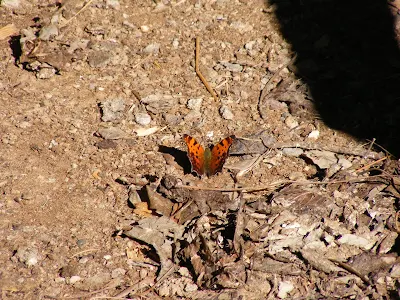I hope you enjoy looking at them as much as I enjoyed taking them.
 |
| A red maple next to the dog kennel. |
 |
| A couple of hybrid aspen, P. grandidentata X P. alba |
 |
| Korean Giant pear (aka, Olimpic). It is half Pyrus ussuriensis which gives it fall color. |
 |
| Typical southern Michigan landscape. Box Elder on the extreme left. Sugar Maple center. Blue Spruce right. Power wires foreground. |
 |
| Firewood in its natural habitat. |
 |
| Burr Oak |
 |
| Northern Red Oak |
 |
| Mystery oak. Nominally English Oak (Q. robar) but leaf size (large) and fall color suggest it is a hybrid. |
 |
| This is a Q. robar with typical fall color. Yes, green is a color. |
 |
| This is a Q. lyrata by Q. macrocarpa hybrid that shows potential for really hot fall color. This is one of the few oak I have been successful grafting. |
 |
| Persimmons. Prettier than any Christmas ornament. |
 |
| More persimmons. This is J-59 which has been very tasty this year. |
 |
| There are still a few Liberty hanging onto the trees. |
 |
| Once again GoldRush is bearing very heavily. |
 |
| Poison Ivy. Give the girl her due, she is pretty in scarlet. |
 |
| Blackberrys |
 |
| A butterfly sunning itself. Insects and reptiles regulate their temperature by sunning, finding shade or puddling. |
 |
| Staghorn sumac framed by White Spruce. |
 |
| Chinquapin Oak. Notable for being tolerant of high pH soils. |
 |
| This is a failed grape breeding project I have not had the heart to terminate. It is Vitis aestivalis-bicolor X cv. Cayuga White. It is way too late for my climate. |
 |
| These critters are the Bos! |


No comments:
Post a Comment
Readers who are willing to comment make this a better blog. Civil dialog is a valuable thing.